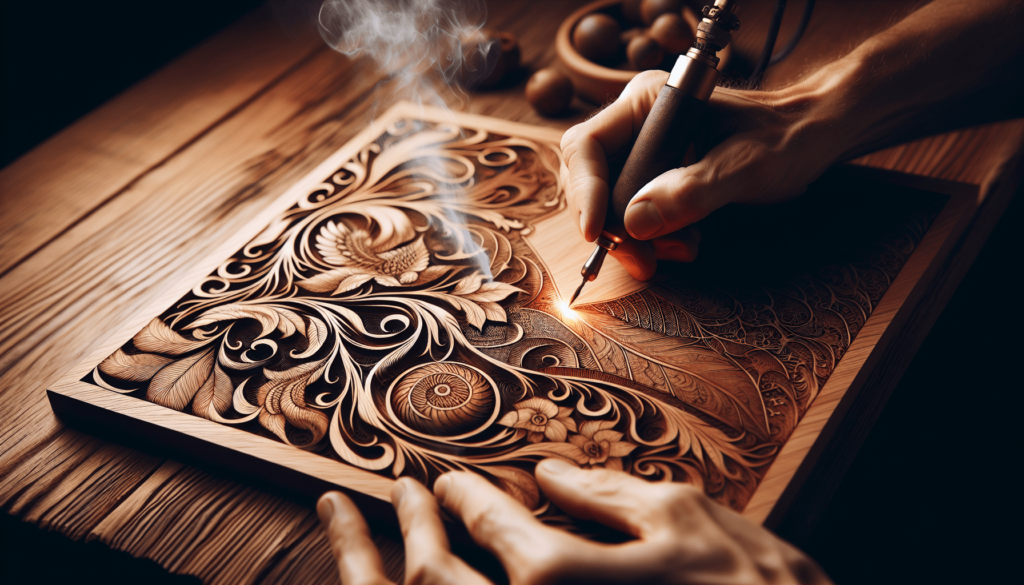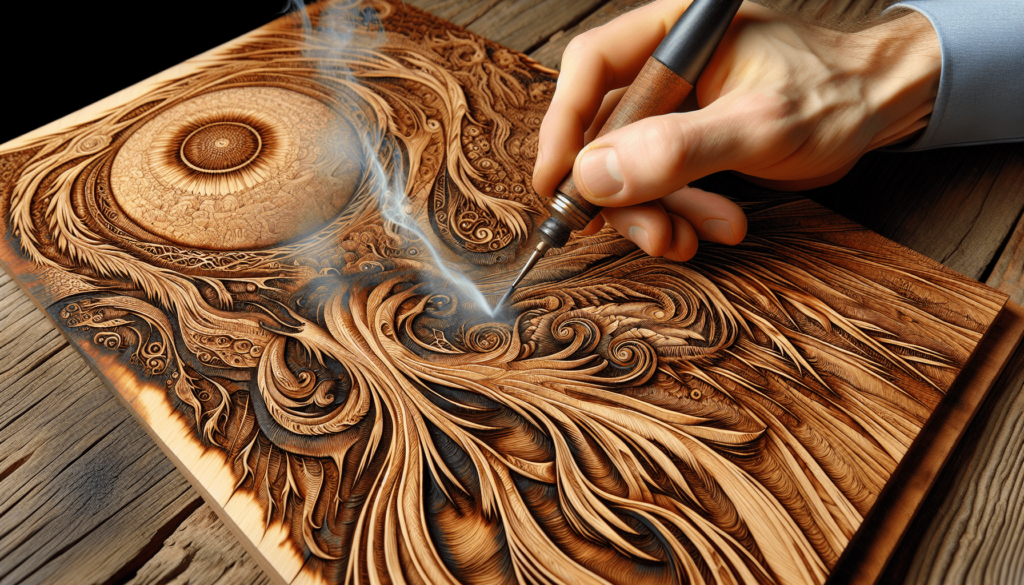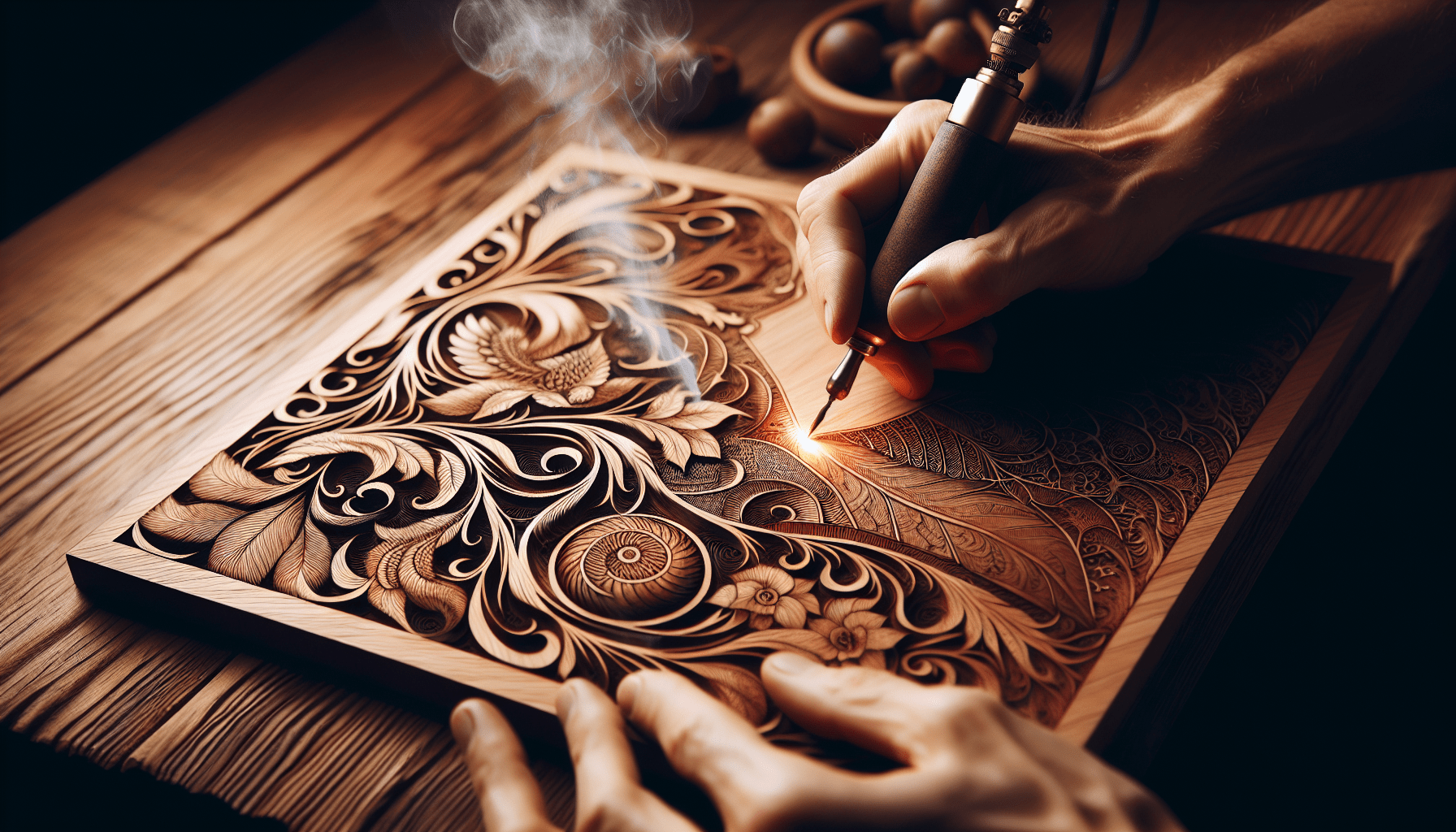What does pyrography mean? Have you ever come across a beautifully decorated wooden piece adorned with intricate designs and wondered how it was made? Well, that’s the intriguing world of pyrography. It’s an art form that may not be immediately familiar to everyone, but it’s exceptional in its craft and history.
What is Pyrography?
Pyrography, often referred to as wood burning, is the technique of decorating wood or other materials with burn marks. These marks are created through controlled heating, usually using a specialized pyrography pen or tool. Pyrography, the term, originates from two Greek words—’pyro’ meaning fire, and ‘graphos’ meaning writing. So, essentially, it translates to ‘writing with fire.’
Tools and Materials for Pyrography
Let’s start with the essentials: tools and materials. In the realm of pyrography, having the right equipment can make a world of difference.
Basic Tools:
- Pyrography Pen: Much like a soldering iron, but with interchangeable tips suited for various effects and precision.
- Wood: Soft woods like birch, pine, or basswood are often preferred due to their ability to handle heat and fine details.
- Sandpaper: Essential for smoothing out the wood surface before you begin.
Optional Enhancements:
- Stencil Templates: Helps in maintaining consistency and achieving complex designs.
- Colorants: Some artists like to add a splash of color to accentuate their work, though traditional pyrography relies solely on burn marks.
History of Pyrography
Pyrography is not just a modern craft; it has deep historical roots. Imagine ancient civilizations, many of which used fire to etch and decorate wooden artifacts.
Early Beginnings
Historical evidence suggests that pyrography has been around for ages. It’s believed that ancient Egyptians and some African tribes used a combination of heated metal tools and sun-heated magnifying lenses to create intricate designs. The amazing part? These early tools were far less sophisticated than what we have today, but they achieved remarkably detailed results.
Pyrography in the Middle Ages
During the Middle Ages, pyrography saw a newfound appreciation across different cultures, particularly in Europe and Asia. Monasteries and artisans elevated this technique, using it to decorate religious artifacts, furniture, and even musical instruments.
Modern Revival
Fast forward to today, and you’ll find that pyrography has experienced a resurgence. Modern tools provide better control, making the craft more accessible to beginners while allowing seasoned artists to push the boundaries of what can be achieved.

Techniques in Pyrography
Pyrography might sound straightforward, but trust me, the techniques are varied and nuanced. A certain level of practice and patience is needed to master the various styles.
Basic Techniques:
- Outlining: Creating the initial outline of your design helps in maintaining structure.
- Shading: Achieved by altering the pressure and speed of the pen, giving a sense of depth and realism.
Advanced Techniques:
- Layering: Building multiple layers of burn marks can create a more intricate and textured look.
- Pointillism: A technique involving tiny, closely placed dots, reminiscent of the painting style with the same name.
One interesting thing about pyrography is that it’s so tactile; you can actually feel the design etched into the wood. This provides an added sensory experience to the visuals.
Is Pyrography Difficult To Learn?
If you’re wondering if this art form is difficult to learn, the answer is more nuanced than a simple yes or no.
For Beginners:
Be prepared for a learning curve. Basic designs and lines can be mastered fairly quickly, but achieving more intricate patterns requires patience and practice.
For Experienced Artists:
For those already skilled in drawing or painting, the transition to pyrography might feel more intuitive. The real challenge lies in mastering the pen and understanding how heat affects different types of wood.
Here’s a small table to show what you might expect at different stages:
| Skill Level | Expected Milestones |
|---|---|
| Beginner | Basic lines, simple shapes |
| Intermediate | Shading, texturing |
| Advanced | Layering, complex designs |

Pyrography Safety Measures
It’s essential to be aware of some safety practices when engaging in pyrography. Working with heated tools means certain precautions need to be taken.
Essential Safety Guidelines:
- Ventilation: Ensure you’re in a well-ventilated area to avoid inhaling any fumes.
- Protective Gear: Use gloves and safety glasses to protect your hands and eyes.
- Fire Safety: Always have a fire extinguisher nearby. Never leave your pyrography pen unattended.
Being cautious isn’t just about your safety; it’s about ensuring you can enjoy the craft for years to come.
The Therapeutic Side of Pyrography
Now, let’s pivot a bit to the more emotional side of things. Many people find pyrography to be incredibly therapeutic. There’s something meditative about the repetitive motions and the focus required.
Mindfulness and Creativity
In today’s fast-paced world, a hobby that demands your full attention can be a fantastic way to unwind. Pyrography requires you to slow down and truly engage with the task at hand.
Artistic Expression
It’s also a fantastic medium for artistic expression. The unique texture and appearance of burned wood give your work a distinct and personalized touch that’s unlike any other art form.
Pyrography Projects and Ideas
Feeling inspired to give it a try? Here are some project ideas to kickstart your pyrography journey.
Beginner Projects:
- Coasters: Simple and functional. Start with geometric patterns or monograms.
- Nameplates: Personalized nameplates make great gifts and allow you to practice basic lettering.
Advanced Projects:
- Wall Art: More complex designs that can make a stunning centerpiece in any room.
- Furniture Decoration: Once you’re confident, try your hand at decorating pieces of furniture like chairs or tables.
Sources of Inspiration
You might be wondering where artists find inspiration for their designs. Well, the sources are as varied as the designs themselves.
Nature:
Floral motifs, animal silhouettes, and natural landscapes provide an endless array of possibilities.
Culture and Tradition:
Cultural symbols and traditional patterns offer a wealth of inspiration and add a historical depth to your work.
Personal Experiences:
Sometimes, the best inspiration comes from your own life and experiences. Create designs that tell your story or capture special memories.
Community and Resources
One of the best parts about pyrography is the community behind it. Various resources can help you improve your skill and connect with like-minded individuals.
Online Forums and Tutorials
Websites like Reddit, YouTube, and specialized forums are treasure troves of tips and tutorials.
Local Workshops
Check your local community centers or art stores for workshops. There’s nothing like hands-on guidance to propel your skills forward.
Conclusion
So there you have it. Pyrography is more than just an art form; it’s a blend of history, skill, and personal expression. Whether you’re a complete novice or an experienced artist, there’s always something new to discover in this fascinating craft. From understanding the tools and materials to exploring various techniques and safety measures, you now have a comprehensive understanding of what pyrography means. If you’re up for the challenge, grab a pyrography pen, some wood, and let your creativity ignite.

